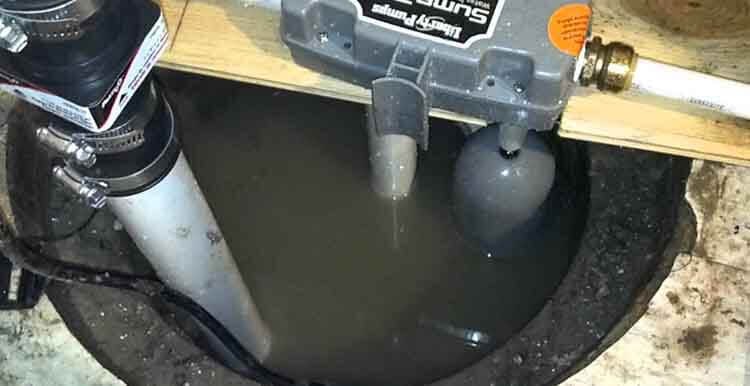by James Williams
It is always essential to have in place a sump pump that could act as backup during prolonged rain and flooding duration. A backup that doesn’t rely on electricity can be helpful in removing an encroaching water.
A water powered sump pump has been regarded as a better choice for back-up whenever power goes out to keep the basement dry. The device is an important companion to remove water and improve the quality of indoor air without relying on electricity. This is because reducing the moisture, mold, and mildew buildup can interfere with the circulation.
However, several water-powered sump pump disadvantages can make them annoying to own. Compared to the available options on the market, the pumps have several drawbacks that make them undesirable.

One drawback with these systems is a high risk of malfunctioning just when it is needed to keep the water out. If the room experiences large volumes of water in rapid speed, the system will be overwhelmed and forced to break down.
This is ironic considering the purpose of the pump is to remove extra water volumes from the basement. The job of a sump pump is to keep water from backing up into the basement. However, this water powered sump pump will struggle to contain flooded water whenever its levels increases to a certain level.
The result will be rising waters within the basement. At the same time, the device may malfunction when debris and minerals clog up the pump.
It is somehow complicated and expensive to install the water-powered pumps in your basement when you compare with other options such as battery backups. You will need to be more involved when installing the device.
The pumps must be connected to the water supply piping in your home. Also, you need to be keen when installing these sump pumps for effective functioning. Any improper installation can fail to keep the basement dry or eliminate any humidity in the room.
Therefore, you cannot rely on these sump pumps when having an abrupt flooding of the basement. When seeking to keep the room dry, you might be forced to seek another alternative backup that does not complicate installing. This pump will take time to put in place before it can start functioning.
Compared to other sump pump options on the market, the pumping volume of water-powered pumps is lower. These devices run at an insufficient capacity, which means it pumps less water.
It does not have a pumping rate that could match the highest-volume battery backup sump pumps. A lower pumping volume reduces the effectiveness of this pump in keeping a basement dry. It means the device will not effectively stop water from encroaching due to a lower pumping volume.
As such, the sump pump will not remove water per square inch faster than the battery backup with little home pressure.
These systems may not effectively work in homes with wells. This is because it operates from water pressure. Its operation is dependent on having water delivery to maintain pressure during a power outage.
Again, this means any power outage will shut off the pump. The fact that not everyone can use the pumps is a disadvantage for the tool. It is only ideal for homes with water pressure needed to pump water from the sump basin.
Houses with wells lack the pressure that could help in water suction, and thus do not qualify to purchase the device.
This water sump pump will demand that your home has high water pressure for it to function effectively. In case water pressure is not high enough, the machine will not function effectively in drying the basement.
They operate on the principle of the Venturi effect, where they require pressure to open a valve connected to the water supply. Should the water drop during an emergency, this sump pump will struggle to keep the basement dry. The result is a flooded basement and expensive repairs.
Simultaneously, a reduction in pressure can result in dirty water siphoning back into the basement. Unless there is a built-in check valve to prevent the siphoning from happening, a drop in pressure will see negative results in drying the cellar.
When you install this sump pump in your basement, you will be dealing with two issues. First, you have a system that is not efficient enough to keep water from returning to the basement.
Secondly, if you are an environmentalist, you will have to contend with using clean drinkable water to pump and get rid of dirty sump water. This is somehow of a dilemma when considered from an economist’s point of view.
Also, you will have to contend with the cost of acquiring this device, the gallons of clean water per hour used, and an associated water bill.
Conclusion
The decision to use these machines lies in assessing its advantages and disadvantages. Anyone who has experienced a wet basement understands the importance of having a sump pump. A backup sump up is especially valuable whenever there is an electricity outage.
This is why they are considered valuable because they do not need electricity to operate. However, many water powered sump pump disadvantages make them undesirable compared to battery backup options. The complicated installation, low pumping volume, and frequent malfunctions make it not a better choice for backup sump pumps for your homestead.
About James Williams
Hi, This is James from HomerDIY. I have great experience in writing about everything related to Pump and DIY tools. For the last few years, I am researching the different types of tools and sharing my opinion on this blog.
 |
 |
 |
 |
Popular Posts